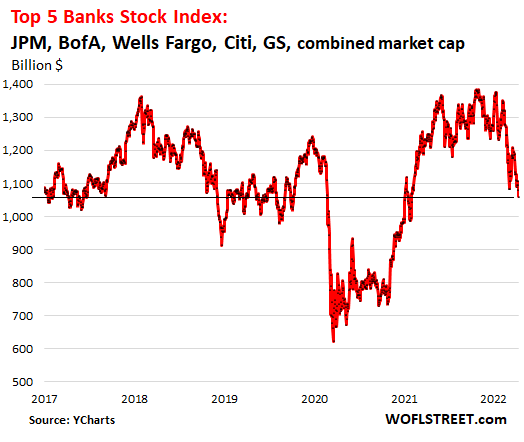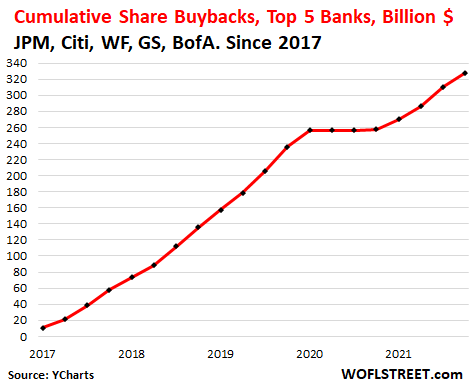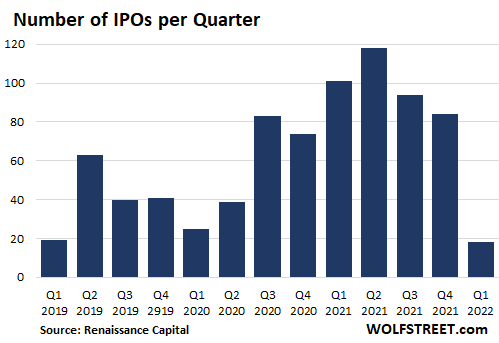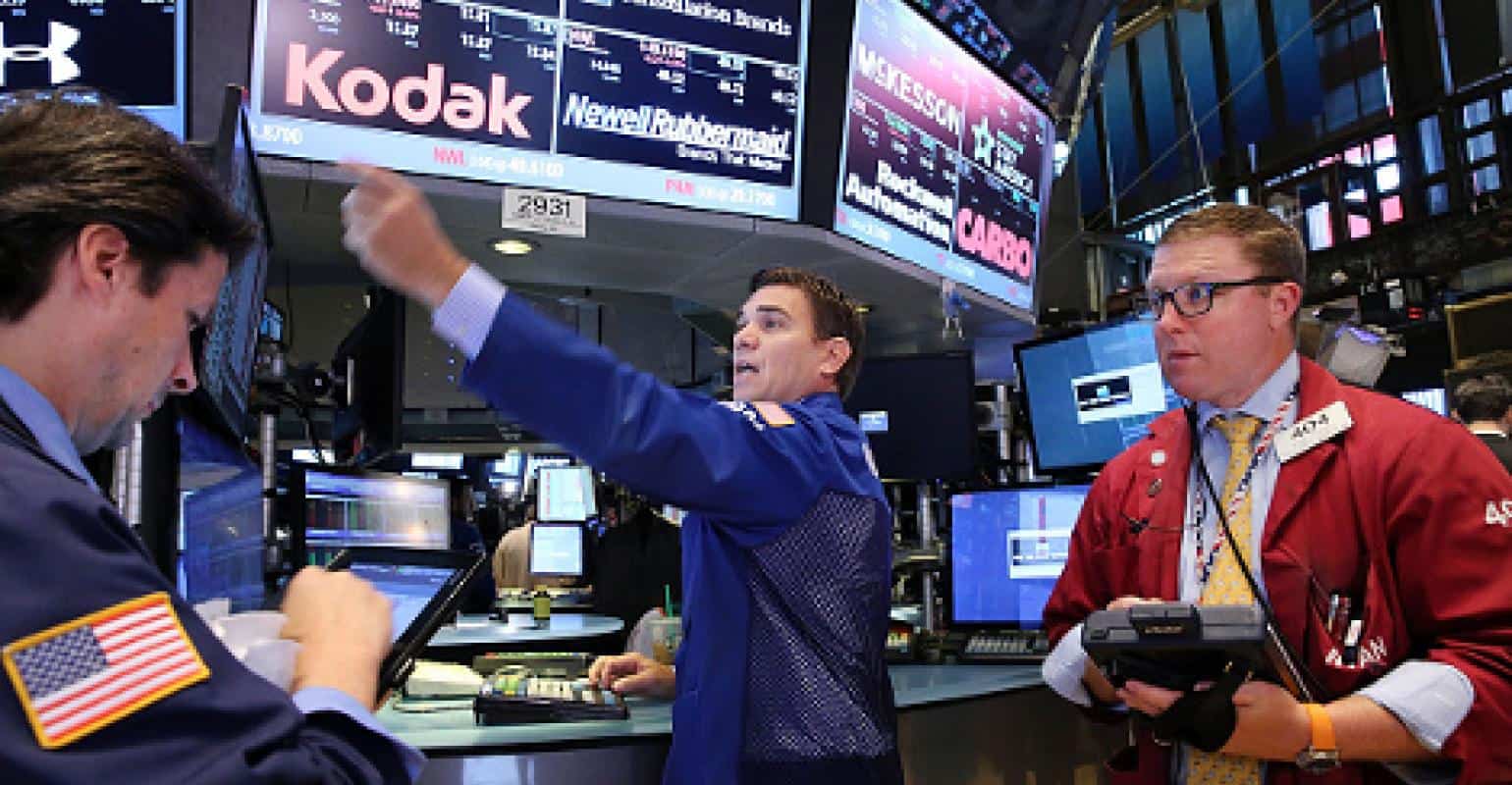Of the big five banks and bank holding companies in the US by total assets – JP Morgan, Bank of America, Wells Fargo, Citigroup, and Goldman Sachs Group – four reported Q1 earnings so far, and BofA will do so next week. Those earnings reports were marked by a sharp decline in revenues and net income, with all kinds of complications in between. And as a group their shares continued their jagged decline that started in November last year.
The WOLF STREET index of the big five banks’ market capitalization has plunged 23.5% since its recent peak in October 2021 (data via YCharts):

This debacle occurred amid enormous share buybacks. These banks have been regularly featured among the largest share buyback queens in the US, except during the pandemic, when they halted the practice for three quarters.
In the five years from 2017 through 2021, the five banks have incinerated, wasted, and destroyed $328 billion in cash on repurchasing their own shares to prop up their stocks, and now their stocks have nothing to show for it (data via YCharts):

Q1 was crappy as IPOs imploded, mortgage activity fizzled, other stuff happened.
JPMorgan Chase [JPM] kicked off the quarterly banking show on Wednesday morning when it reported that its net income plunged by 42% to $8.3 billion in Q1 compared to Q1 last year. Revenues fell 5% to $30.7 billion, on a 35% plunge in revenues in its investment banking division.
Over the two trading days since the earnings release on Wednesday morning, JP Morgan’s shares tanked 4.1% and are down 25% from their 52-week high in January.
In preparation for rate-hike-induced financial stress on borrowers, it set aside $902 million for loan loss reserves, compared to a $5.2-billion benefit a year ago from releasing loan loss reserves it had set up during the pandemic. And it booked $582 million in net charge-offs, bringing the total credit costs to $1.5 billion.
Its Corporate & Investment Bank profits got hit by a $524 million loss, “driven by funding spread widening as well as credit valuation adjustments relating to both increases in commodities exposures and markdowns of derivatives receivables from Russia-associated counterparties,” it said in the earnings release.
During the earnings call, CEO Jamie Dimon said that the bank sees “significant geopolitical and economic challenges ahead due to high inflation, supply chain issues, and the war in Ukraine.”
Goldman Sachs [GS] reported that revenues plunged 27% in Q1, to $12.9 billion, and net income plunged by 42% to $3.9 billion.
Goldman Sachs share were down just a tad on Thursday, and are down 24.5% from their 52-week high in early November.
Investment banking revenue plunged by 36% to $2.4 billion. It set aside $561 million for credit losses, compared to a benefit of $70 million a year earlier. Asset management revenue collapsed by 88% to $546 million, “primarily reflecting net losses in Equity investments and significantly lower net revenues in Lending and debt investments.”
But at its consumer and wealth management division, revenues grew by 21% to $2.10 billion. And its global market revenues ticked up 4% to $7.87 billion. And yes, given the turmoil in the commodities markets, currency markets, and bond markets, revenues at FICC (Fixed Income, Currency and Commodities) jumped 21% to $4.71 billion.
“The rapidly evolving market environment had a significant effect on client activity as risk intermediation came to the fore and equity issuance came to a near standstill,” the earnings release said.
IPOs were crappy all around.
By “equity issuance came to a near standstill,” Goldman is talking about IPOs and SPACs, many of which have imploded spectacularly over the past 12 months. I’m now tracking some of them, including those where Goldman Sachs was the lead underwriter, in the WOLF STREET category of Imploded Stocks.
IPOs are massive fee generators for investment banks. But the collapse of these newly listed stocks has now essentially killed the appetite for new IPOs, which are only fun in a relentless hype-and-hoopla market. In Q1, according to Renaissance Capital, there were only 18 IPOs, including only two in March, down from 118 IPOs in Q2 last year:

Citigroup [C] reported that revenues declined 2.5% to $19.2 billion. Net income plunged 46% to $4.3 billion, on higher operating expenses (+15%) and credit losses of $755 million, compared to a benefit of $2.05 billion a year earlier.
The problem isn’t consumers in the US; they’re doing fine, Citibank said in its earnings release: “We continue to see the health and resilience of the U.S. consumer through our cost of credit and their payment rates. We had good engagement in key drivers such as cards loan growth and vigorous purchase sales growth, so we like where this business is headed.”
The big culprit was investment banking, including IPOs: “the current macro backdrop impacted Investment Banking as we saw a contraction in capital market activity. This remains a key area of investment for us,” Citigroup said.
Its shares rose 1.6% on Thursday but are down 36% from their 52-week high in June.
Wells Fargo [WFC] reported that revenues dropped 5% to $17.6 billion. Net income plunged 21% to $3.67 billion.
One of the culprits was mortgage lending activity, which plunged by 33% in the quarter on surging mortgage rates. “The Federal Reserve has made it clear that it will take actions necessary to reduce inflation and this will certainly reduce economic growth,” and “the war in Ukraine adds additional risk to the downside,” Wells Fargo said in the earnings release.
Shares tanked 4.5% on Thursday and have dropped 23% in two months from their 52-week high in early February.
Bank of America [BAC] will report earnings on Monday. In anticipation, its shares fell 3.2% on Thursday and have plunged 25% from the 52-week high in February.

